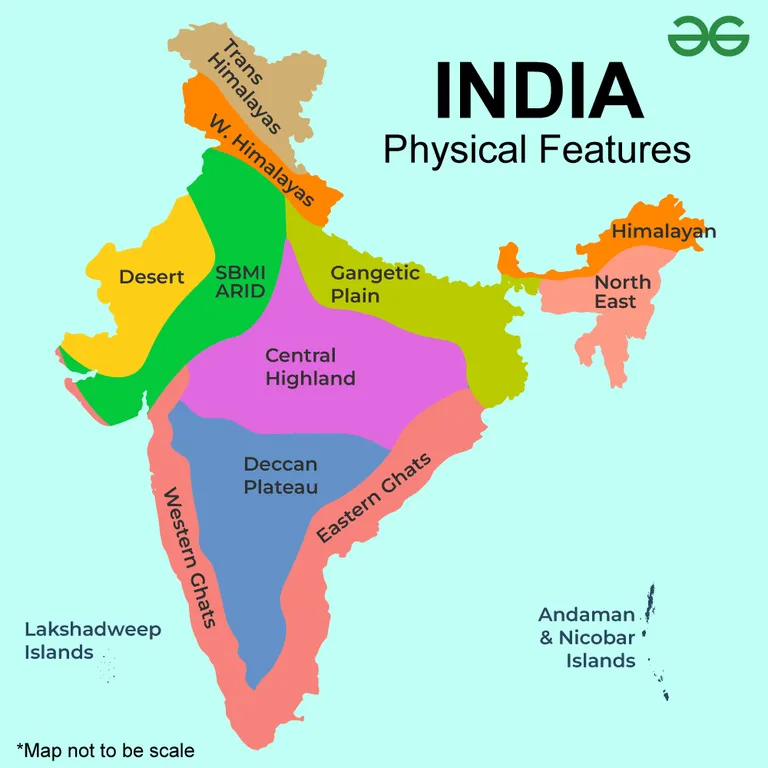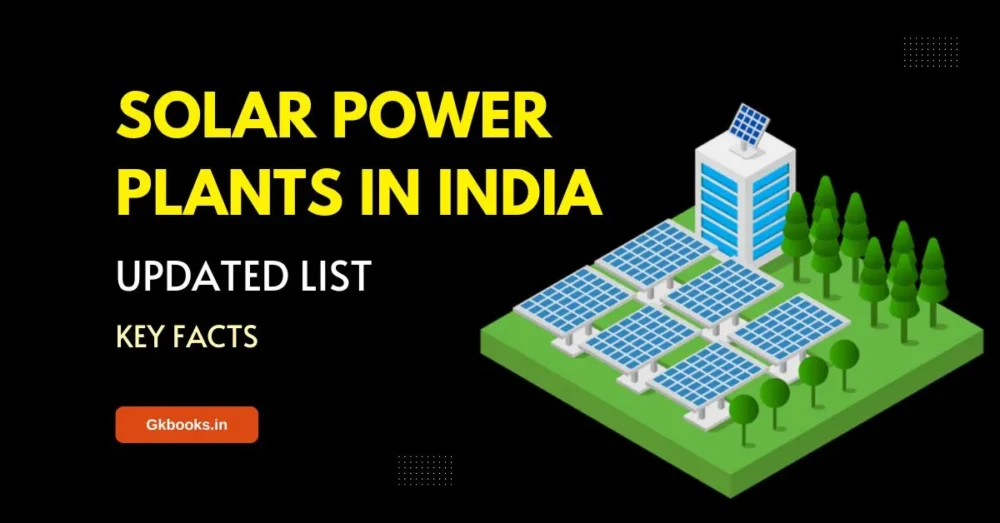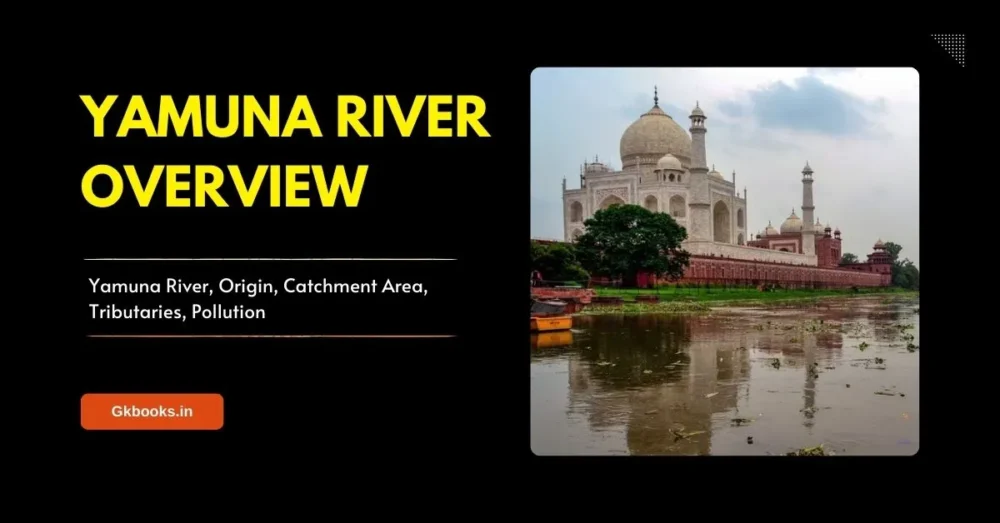Physiography of India: India is characterized by six distinct physiographic divisions. For a comprehensive overview of the Physiographic Divisions of India, including details on Physical Features, Maps, and the significance of each division, explore the complete information available.
Physiography of India
✅Geographical Extent
🔹India is situated from the snow-capped Himalayas in the north to the sun-soaked coastal communities in the south and the lush tropical forests along the southwest coast.
✅Natural Dividers
🔹The Brahmaputra River marks the eastern boundary, while the Thar Desert defines the western frontier.
✅Mainland Coordinates
🔹The Indian Mainland extends between latitudes 8°4′ to 37°6′ north and longitudes 68°7′ East to 97°25′ East.
✅Dimensions
🔹India’s East-West extension covers 2933 km, and the North-South extension spans 3214 km.
✅Tropic of Cancer
🔹The Tropic of Cancer acts as a natural divider, creating Northern India and Southern India at a latitude of 23°30′ north.
✅Eight States Along the Tropic of Cancer
🔹Gujarat, Rajasthan, Madhya Pradesh, Chhattisgarh, Jharkhand, West Bengal, Tripura, and Mizoram are positioned along the Tropic of Cancer.
✅Time Difference
🔹The extreme west and east regions experience a time difference of approximately two hours due to a 30-degree longitude gap.
✅Standard Meridian and Indian Standard Time
🔹The Standard Meridian at 82°30′ East longitude, passing through Mirzapur in Uttar Pradesh, establishes the Indian Standard Time, five and a half hours ahead of GMT.
What are the Major Physiographic Divisions of India?
India boasts remarkable physical diversity, underscored by six distinct physiographic divisions that encapsulate its varied topographical features:
1️⃣Northern and NortheasternNortheastern Mountains
🔸The lofty peaks of the Northern and Northeastern mountain ranges, including the iconic Himalayas, dominate the northern frontier, contributing to India’s breathtaking landscape.
2️⃣Northern Plain
🔸Stretching expansively, the Northern Plain is a vast and fertile region flanked by the Himalayas to the north. It plays a crucial role in India’s agricultural prosperity.
3️⃣Peninsular Plateau
🔸The rugged terrain of the Peninsular Plateau, extending towards the central-southern part of the country, showcases a diverse topography with plateaus, hills, and valleys.
4️⃣Indian Desert
🔸The arid expanse of the Indian Desert in the northwest, particularly the Thar Desert, starkly contrasts the country’s other regions with its unique climatic and geological features.
5️⃣Coastal Plains
🔸India’s vast Coastal Plains bordering the Arabian Sea and the Bay of Bengal present a mosaic of landscapes, from sandy shores to fertile deltas, influencing local ecosystems and economic activities.
6️⃣Islands
🔸The Andaman and Nicobar Islands in the Bay of Bengal and the Lakshadweep Islands in the Arabian Sea contribute to India’s diverse physiography, featuring unique ecosystems and cultures.
This physical diversity enriches India’s natural beauty and influences its climate, biodiversity, and socio-economic activities.
Physiographic Divisions of India MAP

Physiographic Divisions of India
Structure of the Northern and North-Eastern Mountains
🔹The immense Himalayan range exhibits a general orientation from northwest to southwest in the Northwestern region.
🔹While the primary alignment is North-South, the Himalayas extend into Nagaland, Manipur, and Mizoram, imparting geographical, climatic, hydrological, and cultural distinctions.
The subdivisions of the Himalayas are as follows: 👇
✅ Kashmir Himalayas
- Encompassing the Karakoram, Ladakh, Zanskar, and Pir Panjal ranges, the northernmost part of the Kashmir Himalayas forms a cold desert between the Greater Himalayas and the Karakoram ranges.
- The Kashmir Valley, nestled between the towering Himalayas, Pir Panjal, and Dal Lake, features karewa formations ideal for cultivating saffron, particularly the Zafran variety.
- The region is adorned with freshwater lakes, including Dal and Wular, and saltwater lakes, such as Pangong Tso and Tso Moriri.
- Notable rivers like Jhelum and Chenab flow through this Himalayan expanse.
✅ Himachal & Uttaranchal Himalayas
- Drained by the Indus and Ganga river systems, this region lies between the Ravi and Kali rivers in the west and east.
- The northernmost part of the Himachal Himalayas extends into the Ladakh cold desert in the Spiti sub-division of Lahul and Spiti.
- Comprising the Great Himalaya, Lesser Himalayas, and the Shiwalik range (known as Dhaoladhar in Himachal Pradesh and Nagtibha in Uttarakhand), this area is renowned for its “Dun formations” and “Shiwalik formations.”
- All five Prayags are located in this Himalayan section.
✅ Darjeeling and Sikkim Himalayas
- This segment, formed by the Himalayas of Nepal in the west and Bhutan in the east, holds significance despite its modest size.
- The swift-moving Tista River characterizes the area, featuring deep valleys and the prominent Kanchenjunga peak.
- The absence of Shiwalik formations is distinctive, replaced by “duar formations” conducive to cultivating tea gardens.
✅ Arunachal Himalayas
- Lacking Shiwalik formations, the Arunachal Himalayas extend from eastern Bhutan to Diphu Pass in the east.
- Ranges run southwest to northeast, with notable summits like Kangtu and Namcha Barwa. The Brahmaputra crosses Namcha Barwa, flowing through a narrow gorge.
- Due to the challenging geography, transportation links between valleys are nonexistent, and interactions mainly occur in the duar region along the border between Arunachal and Assam.
✅ Eastern Hills and Mountains
- Aligned from north to south, these mountains include the Barak River in Manipur and Mizoram.
- The Loktak Lake, surrounded by mountains in Manipur, sits amid soft, unconsolidated deposits forming the Molassis Basin (known as the Mizoram region).
- Rivers in Nagaland serve as tributaries of the Brahmaputra, while those in Manipur’s eastern region flow into the Chindwin, ultimately contributing to Myanmar’s Irrawaddy.
Physiography of the Northern Plains in India
🔹The formation of the vast Northern Plains in India can be attributed to the alluvial deposits carried by the Indus, Ganga, and Brahmaputra rivers.
🔹Stretching a considerable 3200 km from east to west in Indian Physiography, these plains harbor alluvium deposits that extend up to 2000 kilometers below the surface.
🔹The Northern Plains are characterized by distinct regions, each contributing to the overall physiography:
✅Bhabar
- Positioned as a narrow belt parallel to the Shiwalik foothills, Bhabar marks the slope break-up.
- This region plays a crucial role in the initial stages of alluvial deposit formation.
✅Tarai
- South of Bhabar lies the Tarai region, re-emerging without any demarcated channel.
- Known for its lush growth of natural vegetation, Tarai contributes to the complexity of the Northern Plains.
✅Alluvial Plains
- Extending south of Tarai, the Alluvial Plains represent the mature stage of fluvial erosional and depositional landforms, featuring elements such as sand bars and meanders. This expansive area is a testament to the dynamic interplay of geological forces over time.
The Northern Plains further exhibit two distinctive divisions: 👇
✅Khadar
- Characterized by fresh alluvium deposits, Khadar represents the fertile and regularly inundated floodplains along the rivers, fostering rich agricultural activities.
✅Bhangar
- In contrast, Bhangar consists of older alluvium deposits elevated above the floodplains. This division reflects a more stable and mature stage of landform development.
Physiography of the Peninsular Plateau
🔸 Situated as India’s oldest and most stable continent, the Peninsular Plateau exhibits a general incline towards the East, showcasing a diverse range of physiographic features.
🔸 Notable among these are tors, block mountains, rift valleys, spurs, bare rocky structures, a sequence of humpbacked hills, and wall-like quartzite dykes that naturally facilitate water storage.
🔸 The pronounced occurrence of black soil characterizes the western and northern regions.
🔸The Peninsular Plateau extends westward to Jaisalmer, adorned with Barchans, crescent-shaped dunes, and extensive sand ridges.
🔸The presence of metamorphic rocks such as marble, slate, and gneiss helps trace the metamorphic chain’s geological history.
🔹Divided into three distinct regions, the Peninsular Plateau comprises:
✅Central Highlands
🔸Spanning from the Narmada River to the northern plains, the Central Highlands is bordered by the Satpura Range in the south and the Aravalis in the west.
🔸This region encompasses the Malwa and Chhotanagpur Plateaus, with the Eastern Extension represented by the Rajmahal hills.
✅Deccan Plateau
🔸Separated by a fault from the Chhota Nagpur Plateau, the Deccan Plateau is renowned for its black soil region, often called the Deccan Trap, due to volcanic activity.
🔸This area is conducive to cultivating crops like cotton and sugarcane. The Western and Eastern Ghats flank the Deccan Plateau, converging at the Nilgiri Hills.
✅Northeastern Plateau
🔸An extension of the peninsular plateau, the Northeastern Plateau encompasses the plateaus of Meghalaya and Karbi Anglong, which are geographically distinct.
🔸The Meghalaya plateau consists of the Garo, Khasi, and Jaintia hills, receiving the highest rainfall and boasting abundant mineral resources. Despite its barren vegetation, this plateau is a reservoir of valuable minerals.
Coastal Plains
🔸India’s coastal plains are uniquely framed by the parallel sweep of the Arabian Sea and the Bay of Bengal. It divides the Western and Eastern Coastal Plains based on their location and ongoing geomorphic processes.
✅Western Coastal Plain
🔸Extending from the Rann of Kachchh to Kanyakumari, the Western Coastal Plain is distinguished by four key divisions:
- Kachchh & Kathiawar Coast (Gujarat): This region, situated in Gujarat, adds its distinct character to the Western Coastal Plain.
- Konkan Coast (Maharashtra): The Konkan Coast in Maharashtra contributes to the diverse topography of the Western Coastal Plain.
- Goan Coast (Karnataka): Moving southward, the Goan Coast in Karnataka adds further richness to the coastal landscape.
- Malabar Coast (Kerala): Extending to Kanyakumari in Kerala, the Malabar Coast completes the Western Coastal Plain. This coastal stretch widens towards the northern and southern extremes but maintains a narrower profile in the middle. Unlike their counterparts in the East, rivers along the Western Coast do not form deltas.
✅Eastern Coastal Plain
🔸Stretching along the Bay of Bengal, the Eastern Coastal Plain is comparatively narrower than its Western counterpart.
🔸Despite its developmental status, it lacks abundant ports and harbors.
🔸Notable rivers such as the Mahanadi, Godavari, Krishna, and Kaveri have well-established deltas in this region.
🔸The continental shelf extends up to 500 kilometers into the sea, enhancing the significance of this coastal plain in terms of marine geography.
India’s Island Groups and Their Physiography
🔸India is enriched with two prominent island groups in the Arabian Sea and the Bay of Bengal, each with distinct characteristics.
💢 You might also enjoy: List of Major Islands in India
✅ Andaman and Nicobar Islands (Bay of Bengal)
- Situated in the Bay of Bengal, the Andaman and Nicobar Islands consist of 204 islands.
- The “Ten Degree Channel” is the demarcation line between the Andaman Islands’ north and the Nicobar Islands’ south.
- These islands feature captivating coastlines adorned with coral reefs and picturesque beaches, complemented by equatorial vegetation.
- The Andaman group and the Nicobar group, separated by the channel, collectively contribute to the rich biodiversity of this region.
✅ Bay of Bengal Island Groups
- Comprising approximately 572 islands and islets, the Bay of Bengal Island Group is located between latitudes 6°N and 14°N and longitudes 92°E and 94°E.
- Key islet groups include the Ritchie’s Archipelago and Labyrinth Island.
- The broader division consists of the Andaman Islands to the north and the Nicobar Islands to the south, separated by the 10° channel.
✅Lakshadweep and Minicoy Islands (Arabian Sea)
- These islands in the Arabian Sea are dispersed between latitudes 8°N and 12°N and longitudes 71°E and 74°E, situated 280 to 480 kilometers off the coast of Kerala.
- The Lakshadweep and Minicoy Islands, constructed entirely from coral deposits, comprise around 36 islands, with 11 inhabited.
- The largest island, Minicoy, covers an area of 453 sq. km. The 11° channel acts as a rough divider, with Amini Island to the north and Canannore Island to the south.
Physiography of India Importance
✅Fold Mountains – The Great Mountain Wall of the North
- Geographical Formation: Fold Mountains form the Great Mountain Wall of the North, stretching from Kashmir to Arunachal Pradesh.
- Geographic Span: Extending approximately 2,500 kilometers, these mountains create a formidable geographical presence.
- Variable Width: The width of the Fold Mountains ranges between 230 and 400 kilometers.
- Himalayan Identity: These mountains are commonly referred to as the Himalayas.
- Contribution to Fertility: The Himalayas contribute to the fertility of lowlands by depositing nutrient-rich alluvial soils.
- Protective Role: Acting as a natural barrier, the Himalayas shield the region from frigid waves originating in Central Asia.
In summary, the Fold Mountains, identified as the Himalayas, not only span a significant distance but also play a crucial role in shaping the geography and climate of the surrounding areas.
✅Great Northern Plain
- Geographic Location: The Great Northern Plain is situated south of the Himalayas.
- Extent: It extends from the Punjab Plain in the west to the Brahmaputra valley in the east.
- Characteristics of the Region: The Great Northern Plain is characterized by its riverine nature, featuring slow-moving rivers.
- Fertile Soil: The region boasts fertile soil, contributing to agricultural productivity.
- Moderate Temperatures: Moderate temperatures prevail in the Great Northern Plain, enhancing its suitability for various activities.
- Flat Topography: The plain features a flat topography, providing favorable conditions for infrastructure development.
- Strategic Importance: The combination of fertile soil, moderate temperatures, flat topography, and slow-moving rivers collectively elevates the strategic importance of the Great Northern Plain.
✅Peninsular Plateau
- Geographical Location: The Peninsular Plateau is between the north’s central highlands and the south’s Deccan Plateau.
- Geological Significance: It is the oldest geological structure in the Indian subcontinent.
- Rich in Minerals: The Peninsular Plateau is abundant in minerals, contributing significantly to the country’s mineral wealth.
- Resource Wealth: Beyond minerals, the plateau possesses diverse natural resources, enhancing its economic importance.
- Pivotal Role in the Economy: The Peninsular Plateau plays a pivotal role in India’s economic landscape due to its geological and resource-rich attributes.
✅Coastal Plains – West and East
- Geographic Flanking: The West and East Coastal Plains flank the Western and Eastern Ghats along the Indian coastline.
- Geographic Configuration: They are narrow strips, running parallel to the shoreline.
- Economic Importance: As crucial hinterlands for major ports, these plains are vital for domestic and international trade.
- Contribution to Economic Development: The West and East Coastal Plains contribute significantly to the nation’s economic development by facilitating trade activities.
- Agricultural Potential: The regions boast rich and fertile soil, supporting the cultivation of various crops.
- Role in Crop Cultivation: The fertile soil in these coastal plains plays a crucial role in cultivating diverse crops.
✅Islands
- Island Groups: India comprises two islands – the Andaman and Nicobar Islands and the Lakshadweep Islands.
- Maritime Security Contribution: These islands significantly contribute to India’s maritime security.
- Safeguarding Chokepoints: The islands play a crucial role in safeguarding strategic chokepoints, and ensuring secure maritime passages.
- Deterring Pirate Attacks: They contribute to deterring pirate attacks in Indian waters, acting as a deterrent to maritime threats.
- Cooperative Exercises: These islands enhance collaborative efforts to secure marine assets by engaging in cooperative exercises with other navies.
- Marine Asset Security: The presence of Andaman and Nicobar Islands and Lakshadweep Islands actively contributes to enhancing overall marine asset security.
Physiographic Divisions of India FAQs
The 6 physical divisions of India are:
The Himalayan Mountains.
The Northern Plains.
The Peninsular Plateau.
The Indian Desert.
The Coastal Plains.
The Islands.
The Peninsular Plateau or Deccan Plateau is recognized as the largest physiographic division in India, covering an expansive area of approximately 16 lakh sq km.
The peninsular plateau, originating from the Gondwana landmass, is considered the oldest landmass of the Indian subcontinent.
The Northern Plains are acknowledged as the youngest physiographic feature in India, situated south of the Shivaliks and bordered by the Himalayan Frontal Fault (HFF).
India has six physiographic divisions based on varied features: Northern and North-eastern Mountain, Northern Plain, Peninsular Plateau; Indian Desert, Coastal Plains, and Islands.
Continue Your Journey: Related Posts










